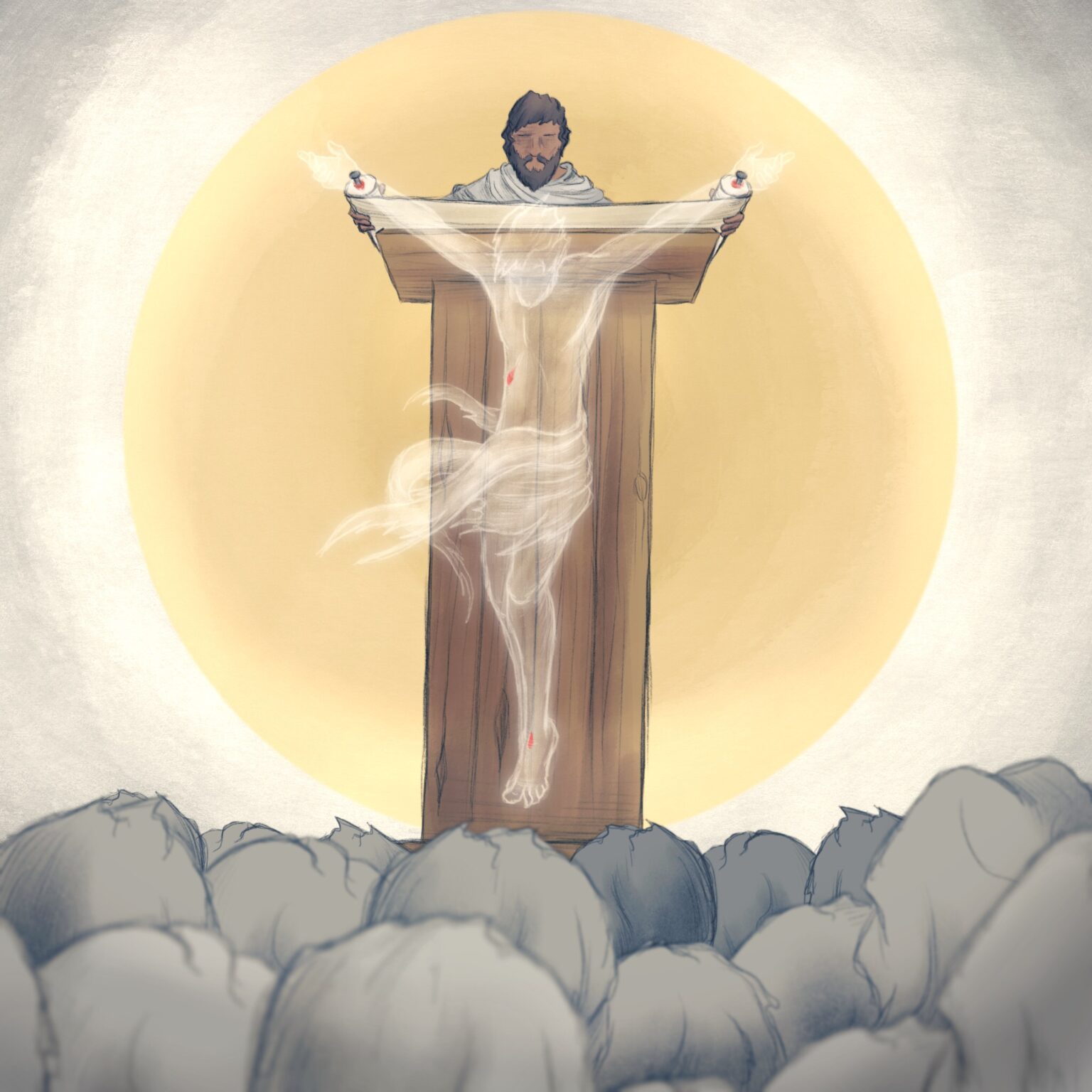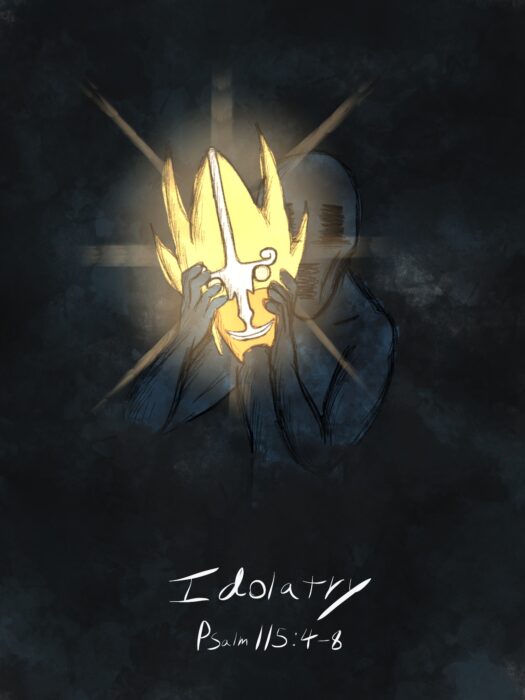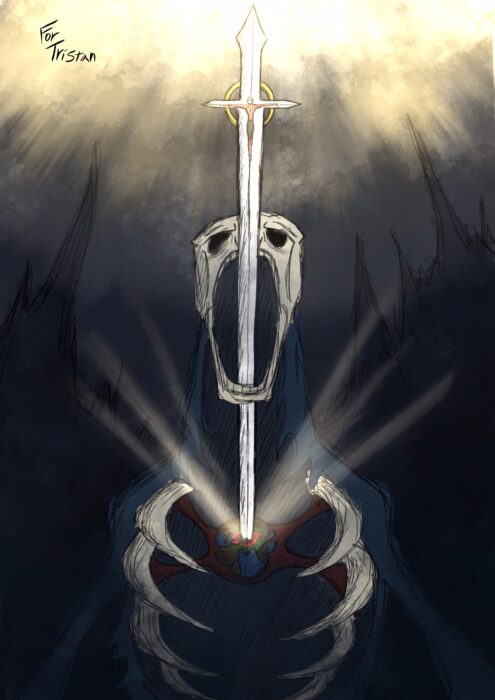
Christ in All of Scripture
All of reality comes from, is sustained by, and exists in order to make known the glory of God (Romans 11:36). And God the eternal and beloved Son is the one who reveals God to us and through whom God the Father is glorified (John 1:18, 17:1; Philippians 2:6-11, 1 Corinthians 15:28). If history exists, ultimately, so that God might be glorified, and if this glorification happens in, through and because of God the Son (by the working of God the Spirit who rejoices to point people to God the Son, John16:14-15), then history–from beginning to end–is about Jesus.
Created time and space is about God the Son, it is about the One who is crucified and raised so that God might be made known and all of reality harmonized in Himself to the praise and glory of His Father (Ephesians 1:7-10; Colossians 1:15-20). While the implications of these things are too many to count…one thing at least that we can say is that–if this is true–we ought to read all of scripture (which is God’s inspired account of His self-revelation in history)–with an eye for seeing Christ. We do this not because God the Father and God the Spirit are not equally God or equally glorious, but because God–in His wisdom–has ordained that the Son should be the “face” of God, as it were. He is the One in whom we see and know the One True Living God. The Spirit points us to the Son, and in the Son we see the Father…..so, we look to see the Son–the crucified and risen Christ–in all of scripture.
An Exegetical Theophany
With those things in mind, I want to look very briefly at Nehemiah 8:1-6. In this passage the people of God have returned–in part–to their land and are gathered in Jerusalem to hear Ezra declare and expound the Law of YHWH (likely the first five books of our Old Testament). Ezra ascends a wooden platform that is lifted up in the sight of all the people and proclaims the Law from morning until midday. What is especially unique about this moment is the people’s response to the exposition of the Law. We are told that they bow their heads, and worship YHWH with their faces to the ground (v.6). Now, isn’t this just a proper and reverent response to the reading of God’s word? Why does it warrant special attention? It most certainly is that, but the reason I want to focus our attention here is that the people’s response in Nehemiah 8 is–almost verbatim–the same response that Moses had when YHWH proclaimed His Name before Him on Mount Sinai (Ex.34:8).
Nehemiah seems to have crafted his account of Ezra’s declaration of the Law so that it echoes YHWH’s own declaration of His Name. In Exodus 34 we read that, after YHWH (יהוה) proclaimed His name, Moses bowed (קדד) toward the earth (ארץ) and worshipped (שׁחה). Then in Nehemiah 8 we read that, having heard the Law of the Lord, the people bowed (קדד) and worshipped (שׁחה)YHWH (יהוה) with their faces toward the earth (ארץ). Just as Moses experienced a theophany (appearance of God) when the Lord declared Himself on Sinai, Nehemiah seems to be saying that the reconstituted people of Israel experience a theophany of sorts when the Law of the Lord (which is a manifestation of his character) was unfolded in their hearing.
Foreshadowing the Cross
But not only does Nehemiah 8 seem to echo the definitive Old Testament revelation of God (Exodus 34), I believe it also foreshadows YHWH’s supreme and climactic self-revelation that comes to us in the person of God the Son, and especially at His crucifixion. Notice with me a few things:

Ezra’s verbal exposition of the Law in Nehemiah 8 is a foreshadowing of YHWH’s enfleshed exposition of the Law on Calvary.
The Cross: An Exposition of the Law?
But how is the cross of Christ an “exposition of the Law”? In order to answer this question, we have to remember that the pinnacle of God’s self-revealing, creation-redeeming work comes in when Jesus lays down His life on the cross (John 1:18, 17:1,5). Truly, that moment is the nexus of created reality and the bright point toward which and from which all things flow. The crucifixion has this dignity because it is there that God is most perfectly made known to us (as has been discussed before on this blog). However, if God Himself is most perfectly communicated on the cross–and if the Law is in perfect accord with His character and is itself a revelation of Who He Is–then we must conclude that the Law is perfectly communicated–perfectly exegeted in act–on the cross.
Consider that in Matthew 22:36-40, Jesus Himself teaches that all the Law and the Prophets (which includes everything Ezra unfolded to the people in Nehemiah 8) hang on or depend on these two commandments:
“You shall love the Lord your God with all your heart and with all your soul and with all your mind.”
And
“You shall love your neighbor as yourself.”
These two commandments: Love God with all and (therefore) love neighbor as self, are the heart, the essence, the wellspring of the Law. As a rainbow is formed when white light is splintered by a prism, so too the entire Mosaic Law is the rainbow refracted from the collision of these two commands with the ancient people of Israel. But on the cross the pure, unmediated white light of love–of which every command is only a prismatic hue–blazes as if the sun itself were nailed to the tree. On the cross, Christ pours out His entire being in obedient and infinite love to God (the First Great Commandment), and this spending of His life in love to His Father is His lavish, sacrificial, enemy-conquering love of neighbor (the Second Great Commandment). Here is the Law of Moses, here is the Righteousness of God, here is the Law and the Prophets–enfleshed in Christ and hanging on the cross beams of Love of God and love of Neighbor.
All that Moses received when he stood on Sinai, all that Ezra expounded from the tree of his pulpit, all that God has ever spoken–Jesus is. Ultimately, the definitive declaration of God’s Law doesn’t come from the mouth of a prophet or the pen of a scribe, rather it comes through flesh and blood, through wood and iron, through the death of the man who is God (Hebrews 1:1-2), and while Ezra stands before the people and exegetes the Law in speech, Jesus hangs before the people and exegetes the Law in being and act.
And what can we say to this? How can we respond to the white-hot radiance of God’s undiluted love–the beating heart of His Law–shining like a beacon on Calvary? I think all we can do is follow the example of Nehemiah 8:
“And they bowed their heads and worshiped YHWH with their faces to the ground.”



